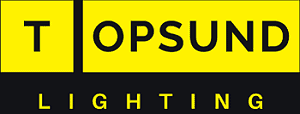Many people search “what is magnetic track light” when exploring modern lighting solutions.
A magnetic track lighting system is a low-voltage solution where fixtures—such as spotlights, linear bars, or pendants—snap magnetically onto a slim rail.
This design makes installation tool-free, repositioning simple, and integration with smart controls seamless.
Compared to traditional downlights or track lights, magnetic track lighting provides greater flexibility, safety, and aesthetic freedom, making it a popular choice among designers, contractors, and system integrators.
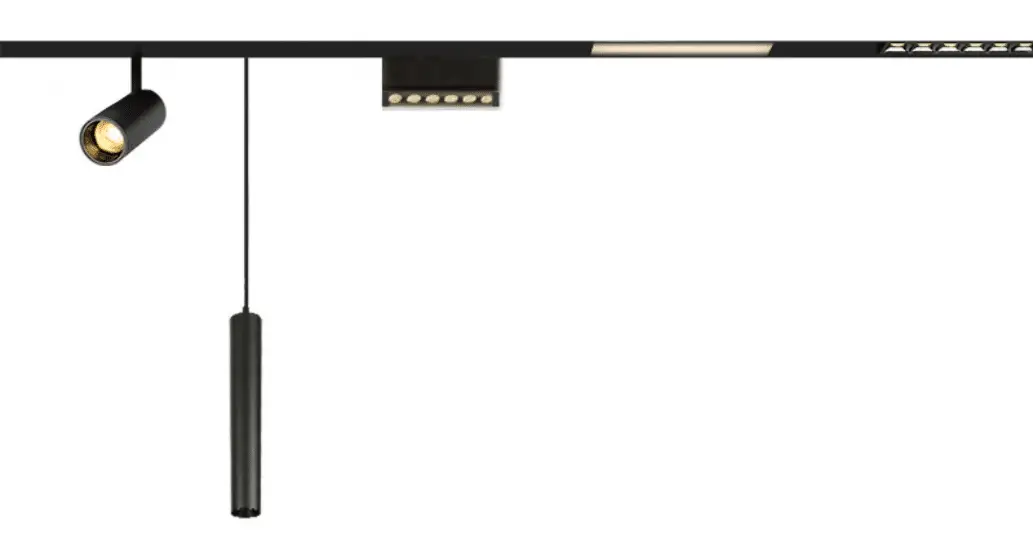
What Is Magnetic Track Lighting and How Does It Work?
At first glance, magnetic tracks look like slim black lines in the ceiling. The secret lies inside.
Magnetic track lighting uses copper strips embedded in aluminum rails. Fixtures connect magnetically, providing both secure hold and electrical contact.
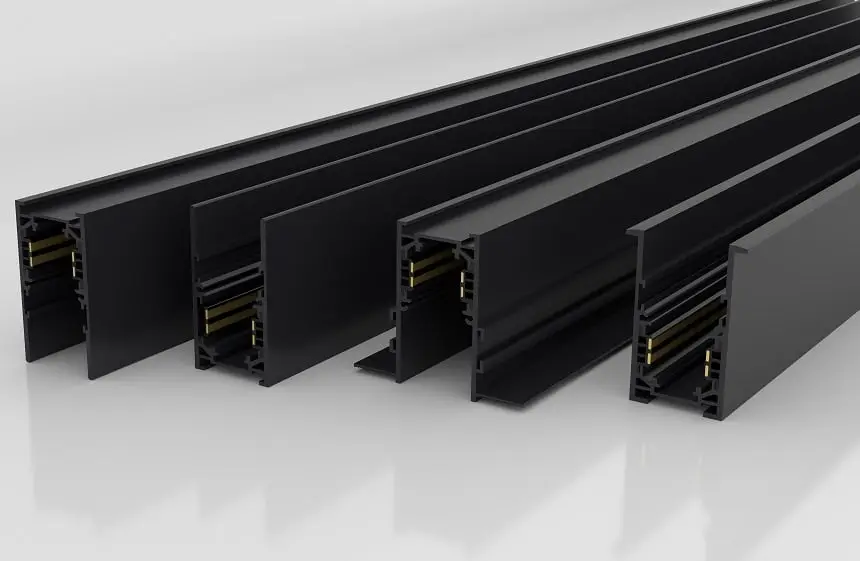
For detailed specs and product options, see our magnetic track light collection.
Inside the Track
- Aluminum profile with built-in copper conductors
- Fixtures (spotlights, linear bars, pendants) with magnetic connectors
- Magnets + copper strips → physical hold + electrical power
- Low-voltage driver (24V or 48V DC) for safety and efficiency
Installation Types
- Surface Mounted – fixed directly on ceiling; ideal for renovations and concrete ceilings
- Suspended – hung with wires/rods; common in offices or open layouts
- Trimless Recessed – seamless “plaster-in” look; popular in villas, galleries, luxury interiors
- Framed Recessed – track edge remains visible; practical for apartments, showrooms
| Style | Description | Typical Use Case |
|---|---|---|
| Surface Mounted | Fixed directly on ceiling | Renovations, concrete ceilings |
| Suspended | Hung with wires/rods | Offices, open spaces |
| Trimless Recessed | Seamless plaster-in look | Villas, galleries, luxury |
| Framed Recessed | Visible edge around track | Apartments, showrooms |
Advantages and Disadvantages of Magnetic Track Lighting
Every system has trade-offs.
Advantages: flexibility, modern aesthetics, safety, and compatibility with smart controls.
Disadvantages: higher upfront cost, fixture weight limits, and brand incompatibility.

| Advantages | Disadvantages |
|---|---|
| Tool-free adjustment of fixtures | Higher initial cost |
| Minimalist, slim design | Limited fixture weight support |
| Mix spotlights, linears, pendants | Track quality varies by supplier |
| Low-voltage, safer operation | Brand profiles not standardized |
| Smart control integration | Needs correct driver selection |
Explore different models and installation options on our magnetic track lighting system page.
How Much Does Magnetic Track Lighting Cost?
Cost often decides whether a contractor specifies magnetic tracks or defaults to traditional downlights.
Typical ranges:
- Track: $3–$10 per meter
- Fixtures: $5–$16 each
- Drivers: $8–$14 (smart drivers cost more)
- Accessories: $1–$5 each
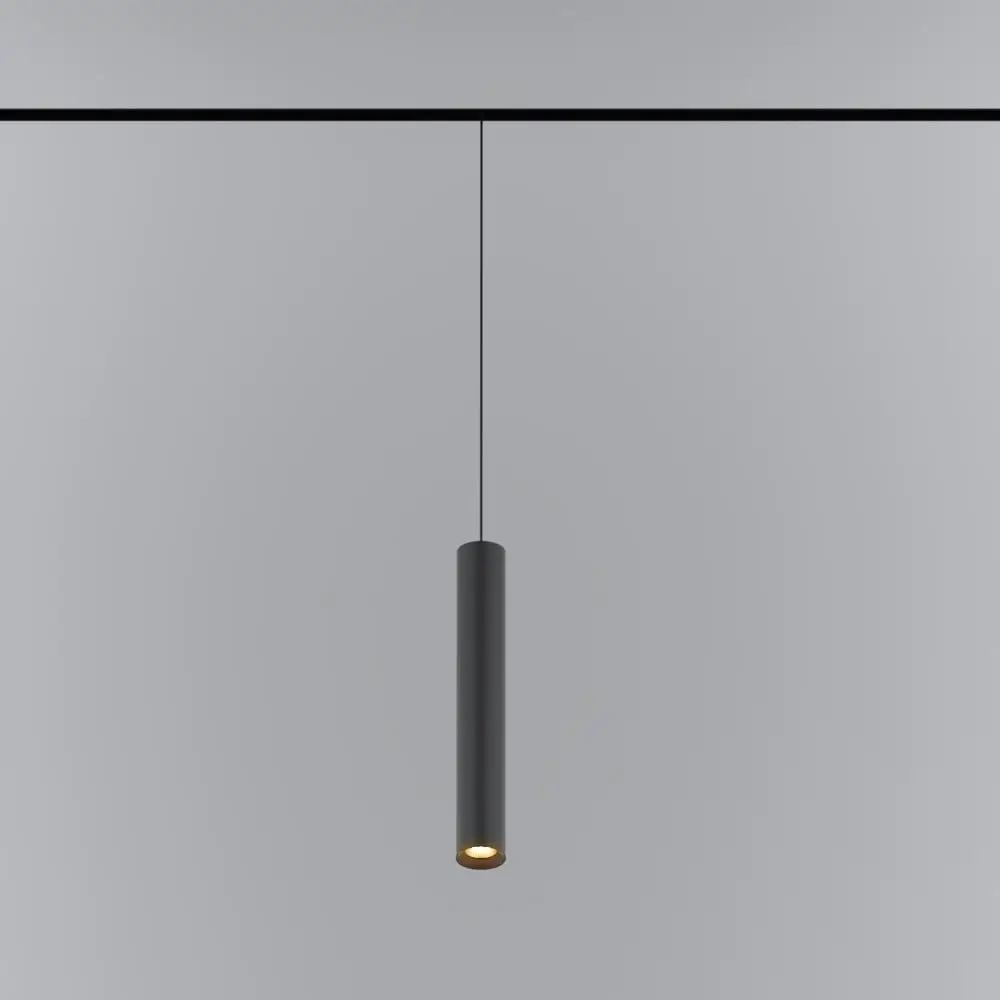
| Component | Price Range | Notes |
|---|---|---|
| Track (per m) | $3–$10 | ≥1.2mm aluminum + solid copper = stronger, stable |
| Spotlights | $5–$16 each | Depends on wattage, beam angle, housing finish |
| Linear Lights | $5–$16 each | Length + lumen output affect price |
| Drivers | $8–$14 | Standard CC; smart (DALI/KNX/Casambi) costs more |
| Accessories | $1–$5 each | Joints, connectors, end caps add small costs |
For exact quotations and bulk pricing, contact us directly via the magnetic track lighting system page.
How to Install and Maintain Magnetic Track Lighting
Despite appearances, installation is straightforward if done in sequence.
Step-by-step process:
- Fix track to ceiling (surface, suspended, or recessed).
- Wire driver to track (match total wattage + voltage).
- Add connectors, joints, end caps.
- Snap in fixtures and test system.
- Finish plastering/ceiling closure only after testing.

| Step | Action | Key Note |
|---|---|---|
| Track Mount | Fix track with screws/brackets | Ensure alignment |
| Driver Wiring | Connect driver to track | Correct wattage & voltage match |
| Accessories | Install connectors, joints | Secure sections tightly |
| Fixture Insert | Snap in lights, test system | Confirm before finishing |
| Finishing | Plaster/close ceiling | Only after successful testing |
| Maintenance | Replace fixtures without tools | Drivers must remain accessible |
Smart Control Integration
Modern projects demand connectivity.
Magnetic track systems support DALI, KNX, Casambi, ZigBee—depending on driver choice.
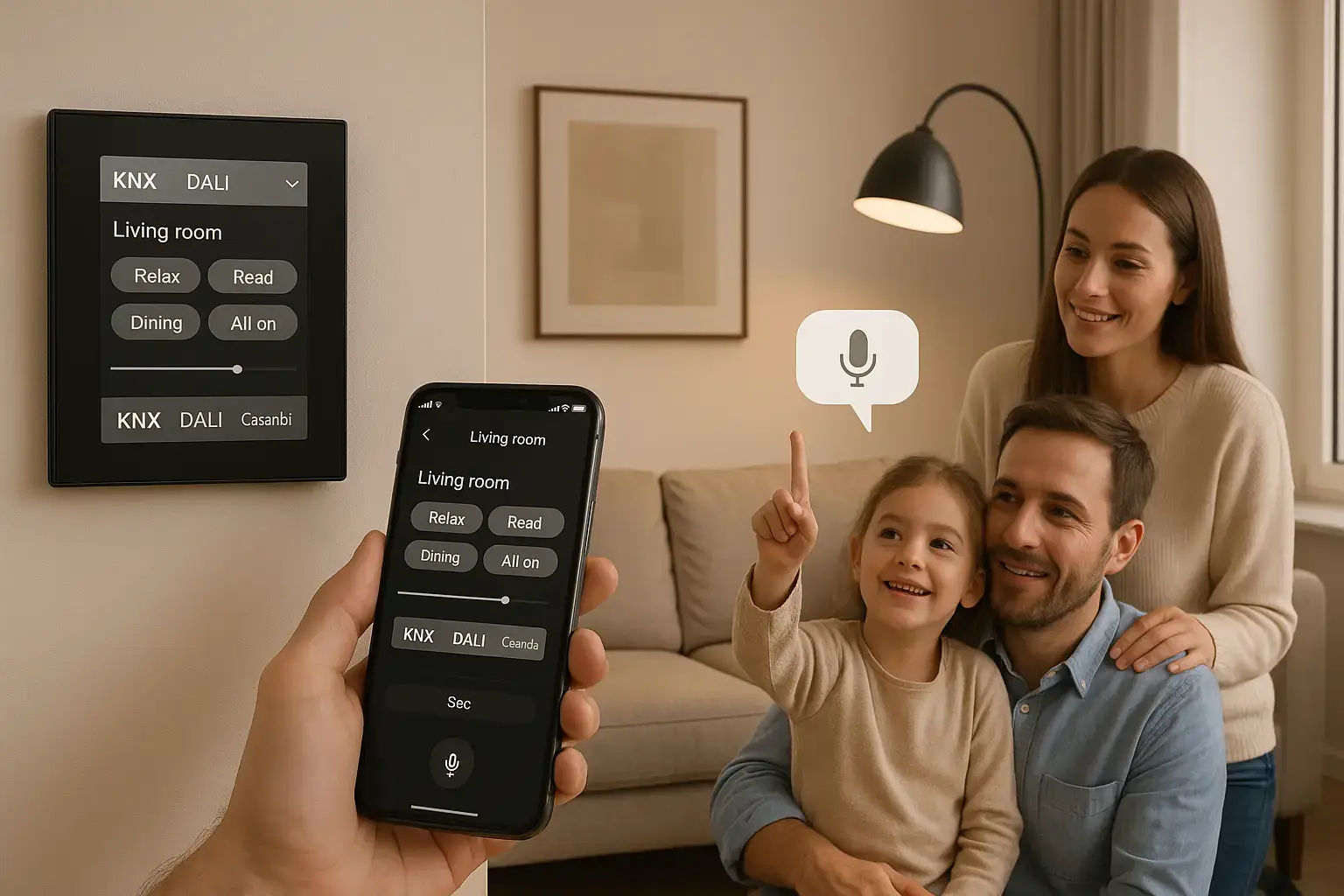
| Protocol | Control Type | Best Use Case |
|---|---|---|
| DALI | Precision wired control | Offices, luxury projects |
| KNX | Full automation system | Villas, high-end apartments |
| Casambi | Wireless app control | Retrofits, renovations |
| ZigBee | Consumer platforms | Hue, Tuya, Alexa, Google |
Conclusion
Magnetic track lighting combines design flexibility, low-voltage safety, and smart system compatibility.
For contractors, it reduces renovation time; for designers, it enables creative freedom; for integrators, it connects easily with automation platforms.
With the right drivers, quality tracks, and careful installation, magnetic systems are a future-proof lighting choice for residential and commercial projects.
Ready to plan your project? Discover our full range of magnetic track lighting systems and request a quote today.
FAQ
Q1: What is magnetic track light?
A1: A magnetic track light is a low-voltage lighting system where fixtures such as spotlights, linear bars, or pendants snap magnetically onto a slim aluminum rail. Magnets hold the fixture in place while copper strips inside the rail provide power, allowing tool-free installation and flexible repositioning.
Q2: How does magnetic track lighting work?
A2: Magnetic track lighting works with copper conductors embedded inside an aluminum rail. Fixtures have magnetic connectors that attach securely to the rail, drawing power while staying firmly in place. A driver converts mains electricity into 24V or 48V low-voltage current, making the system safe and energy efficient.
Q3: How much does magnetic track lighting cost?
A3: Magnetic track lighting costs vary by component. Tracks are typically $3–$10 per meter, fixtures range from $5–$16 each, and drivers cost $8–$14. Accessories such as connectors or end caps add $1–$5. Smart drivers for systems like DALI, KNX, or Casambi are more expensive.
Q4: What are the advantages of magnetic track lighting?
A4: The main advantages are flexibility, minimalist design, low-voltage safety, and compatibility with smart controls. Fixtures can be moved without tools, and a single track can mix spotlights, linear lights, and pendants. The downsides include higher upfront cost, fixture weight limits, and lack of cross-brand compatibility.
Q5: Is magnetic track lighting safe?
A5: Yes. Most systems run on 24V or 48V DC, which is considered safe low-voltage power. This reduces the risk of electrical shock compared to traditional mains-voltage lighting.
Q6: Can magnetic track lights connect to smart home systems?
A6: Yes. By using the correct driver, magnetic track lighting can integrate with DALI, KNX, Casambi, or ZigBee, enabling app control, voice assistants, and home automation scenes.
